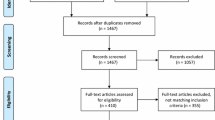Abstract
Incisional hernia is a common problem after abdominal surgery. The complication and recurrence rates following the different repair techniques are a matter of great concern. Our aim was to study the results of incisional hernia repair in Sweden. A questionnaire was sent to all surgical departments in Sweden requesting data concerning incisional hernia repair performed during the year 2002. Eight hundred and sixty-nine incisional hernia repairs were reported from 40 hospitals. Specialist surgeons performed the repair in 782 (83.8%) patients. The incisional hernia was a recurrence in 148 (17.0%) patients. Thirty-three per cent of the hernias were subsequent to transverse, subcostal or muscle-splitting incisions or laparoscopic procedures. Suture repair was performed in 349 (40.2%) hernias. Onlay mesh repair was more common than a sublay technique. The rate of wound infection was 9.6% after suture repair and 8.1% after mesh repair. The recurrence rate was 29.1% with suture repair, 19.3% with onlay mesh repair, and 7.3% with sublay mesh repair. This survey revealed that there is room for improvement regarding the incisional hernia surgery in Sweden. Suture repair, with its unacceptable results, is common and mesh techniques employed may not be optimal. This study has led to the instigation of a national incisional hernia register.
Similar content being viewed by others
References
van´t Riet M, Steyerberg EW, Nellensteyn J, Bonjer HJ, Jeekel J (2002) Meta-analysis of techniques for closure of midline abdominal incisions. Br J Surg 89:1350–1356
Mudge M, Heges LE (1985) Incisional hernia: a 10 year prospective study of incidence and attitudes. Br J Surg 72:70–71
Wissing J J, van Vroonhoven J, Schattenkerk ME, Veen HF, Ponsen RJ, Jeekel J (1987) Fascia closure after midline laparotomy—results of a randomized trial. Br J Surg 74:738–741
Sugerman HJ, Kellum JM Jr, Reines HD, DeMaria EJ, Mewsome HH, Lowry JW (1996) Greater risk of incisional hernia with morbidly obese than steroid dependent patients and low recurrence with prefascial polypropylene mesh. Am J Surg 171:80–84
Cahlane MJ, Shapiro ME, Silen W (1989) Abdominal incision:decision or indecision? Lancet 21:146–148
Luijendijk R, Hop W, van den Tol M, de Lange D, Braaksma M, IJzermans J, Boelhower R, de Vries B, Salu M, Wereldsma J, Bruijninckx C, Jeekel J (2000) A comparison of suture repair with mesh repair for incisional hernia. N Engl J Med 343:392–398
Korenkov M, Paul A, Sauerland S, Neuebauer E, Arndt M, Chevrel JP, Corcione F, Fingerhut A, Flament JB, Kux M, Matzinger A, Myrvold HE, Rath AM, Simmermacher RK (2001) Classification and surgical treatment of incisional hernia. Results of an experts’ meeting. Langenbeck’s Arch Surg 386:65–73
Cassar K, Munro A (2002) Surgical treatment of incisional hernia. Br J Surg 98:534–545
Flum DR, Horvath K, Koepsell T (2003) Have outcomes of incisional hernia repair improved with time? A population-based analysis. Ann Surg 237:129–135
Burger J, Luijendijk R, Hop W, Halm J, Verdaasdonk E, Jeekel J (2004) Long-term follow-up of a randomized controlled trial of suture versus mesh repair of incisional hernia. Ann Surg 240:578–585
Goodney PP, Birkmeyer CM, Birkmeyer JD (2002) Short-term outcomes of laparoscopic and open ventral hernia repair. A meta-analysis. Arch Surg 137:1161–1165
Cobb W, Kercher K, Heinford T (2005) Laparoscopic repair of incisional hernias. Surg Clin N Am 85:91–103
Itani K, Neumayer L, Reda D, Kim L, Anthony T (2004) Repair of ventral incisional heria: the design of a randomized trial to compare open and laparoscopic surgical techniques. Am J Surg 188:22S–29S
Heinford T, Park A, Ramshaw B, Voeller G (2003) Laproscopic repair of ventral hernias. Nine years experience with 850 consecutive hernias. Ann Surg 238:391–400
Haapaniemi S, Nilsson E (2002) Recurrence and pain three years after groin hernia repair. Eur J Surg 168:22–28
de Vries Reilingh TS, van Geldere D, Langenhorst B, de Jong D, van der Wilt GJ, van Goor H, Bleichrodt RP (2004) Repair of large midline incisional hernias with polypropylene mesh: comparison of three operative techniques. Hernia 8:56–59
Kelly ME, Behrman SW (2002) The safety and efficacy of prosthetic hernia repair in clean-contaminated and contaminated wounds. Am Surg 68:524–528
LeBlanc KA (2004) Laparoscopic incisional and ventral hernia repair: complications—how to avoid and handle. Hernia 8:323–331
Mittermair R, Klingler A, Wykypiel H, Gadenstätter M (2002) Vertical Mayo repair of midline incisional hernia: suggested guidelines for selection of patients. Eur J Surg 168:334–338
Author information
Authors and Affiliations
Corresponding author
Rights and permissions
About this article
Cite this article
Israelsson, L.A., Smedberg, S., Montgomery, A. et al. Incisional hernia repair in Sweden 2002. Hernia 10, 258–261 (2006). https://doi.org/10.1007/s10029-006-0084-4
Received:
Accepted:
Published:
Issue Date:
DOI: https://doi.org/10.1007/s10029-006-0084-4




